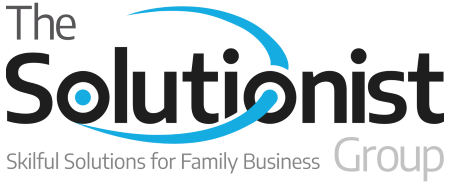Every family business walks a tightrope between ownership (rights, control, and independence) and stewardship(responsibility, duty, and legacy). When family members hold conflicting attitudes toward these mindsets, conflict is inevitable—usually around money, control, and time horizons. Alignment, governance, and courageous decision-making are the antidotes.
The Core Divide: Ownership vs Stewardship
Ownership = Rights & Control
Ownership is about entitlement, decision power, and immediate benefit.
Owners think in the language of “mine,” “now,” and “control.”
They focus on:
- Financial performance, dividends, and liquidity.
- Short-term outcomes and personal gain.
- Status, independence, and the right to “do what I want with what’s mine.”
The Ownership Mindset is self-referential and commercially rational.
It works fine for first-generation entrepreneurs, but it’s toxic for long-term continuity.
Stewardship = Responsibility & Legacy
Stewardship means protecting and enhancing the family’s legacy—financial, intellectual, human, and social capital—for future generations.
Stewards think in the language of “ours,” “future,” and “duty.”
They focus on:
- Long-term sustainability.
- Governance and transparency.
- Shared purpose and values.
- Continuity for future generations, employees, and community.
The Stewardship Mindset is collective, patient, and purpose-driven.
It sees ownership not as a right to enjoy—but as an obligation to honour.
When the Two Worlds Collide
When some family members are in Ownership Mode and others in Stewardship Mode, everything fractures:
- Planning horizons clash: short-term exit vs long-term legacy.
- Money expectations diverge: dividends vs reinvestment.
- Power struggles erupt: control vs accountability.
- Succession plans stall: one generation wants out, the next wants to build.
- Governance breaks down: cliques form, trust erodes, and conversations become circular.
In time—or after a catalytic event like succession, sale, or crisis—old resentments resurface. Without intervention, these dynamics can destroy both the business and the family.
Why It Matters
A family in “ownership mode” may thrive financially in the short term—but rarely survives beyond the second or third generation.
A family in “stewardship mode” builds resilience and continuity—ensuring that legacy, not just wealth, is passed forward.
The question for every family business is simple:
Are we acting as owners… or stewards?
Strategies & Solutions
1) Recognise and Name the Divide
Acknowledge when family members are operating from different mindsets.
Avoid framing it as right vs wrong—it’s a difference in time horizon and purpose, not morality.
2) Facilitate Honest Family Conversations
Gather the key stakeholders and unpack:
- Personal values and needs (“What matters most to me?”)
- Visions and goals (“What does success look like for our family and business?”)
- Expectations (“What do I want—independence, income, or legacy?”)
Afford equal respect to:
- The individual (their rights and identity),
- The family (its culture and relationships), and
- The business (its strategic and financial imperatives).
3) Define Plan A and Plan B
Once values and goals are clear:
- Plan A: A shared long-term vision—if alignment is achievable.
- Plan B: A pragmatic, respectful separation plan—if it isn’t.
“A NO decision is OK, but no decision is not OK.”
Prolonged indecision is poison. If alignment isn’t possible, design an alternative that works under real-world conditions, not wishful thinking.
4) Flush Out Core Differences Quickly
Conduct exploratory interviews with all major stakeholders.
Surface what people truly want—financial independence, legacy, liquidity, or freedom.
Use an interest-based negotiation approach to explore “best possible” outcomes.
Avoid lazy compromises where everyone loses equally.
Instead, use creative, principled problem-solving to find outcomes that work for all, even if they look different from what anyone expected.
5) Engineer Pathways for Both Mindsets
For Ownership-Oriented Family Members:
- Create a liquidity event:
- Sell non-core assets, or
- Partial sale of the business, or
- Redeem shares through a structured buyout.
- Allow them to take capital out to satisfy personal goals.
- Let them exit gracefully or re-engage later as non-executive stewards.
For Stewardship-Oriented Family Members:
- Build the governance architecture:
- Family Council: for family values, education, and cohesion.
- Business Board: for strategy, accountability, and transparency.
- Owners’ Council: for capital and dividend policy.
- Clarify the family’s expectations of the business (e.g. return on equity, social responsibility).
- Define success as continuity + contribution, not just profit.
6) Embrace the CONSEPS Model for Decisions
Follow a structured decision framework (such as CONSEPS):
Context → Options → Negotiation → Solution → Execution → Performance → Sustainability.
This ensures decisions are made transparently and accountably.
It’s not about perfect outcomes—it’s about principled, reasoned decisions that move things forward.
7) Focus on Decision Quality, Not Consensus
Consensus isn’t always possible.
But a decision—any decision made through a fair, transparent process—is better than endless paralysis.
Avoid avoidance, denial, or manipulation that prevents progress.
Families that refuse to decide inevitably face meltdowns, exits, or estrangements.
The Lifeboat Question
If you’re in a sinking lifeboat, do you throw the family or the business overboard to survive?
Everyone says, “Save the family!”
But in practice, Ownership Mindset families often do the opposite—sacrificing relationships for control.
Stewardship families know that saving the family is saving the business—because trust, cohesion, and shared purpose are the real sources of long-term wealth.
Outcomes
When the process works:
- Conflicting mindsets are named, understood, and respected.
- Family members either align or separate cleanly.
- Owners who value liquidity can exit with dignity.
- Stewards gain clarity, structure, and governance to protect legacy.
- The business gains unity, direction, and credibility.
When it doesn’t:
- Paralysis sets in.
- Trust fractures.
- The family—and the business—eventually break apart.
Key Takeaways
- Ownership is about rights; Stewardship is about responsibility.
- The former prioritises independence and control; the latter, legacy and continuity.
- Misalignment between the two is a leading cause of family business breakdown.
- Alignment requires honesty, process, and the courage to decide.
- Remember: A NO decision is OK. No decision is not.
Taken from the up coming book:
“Family Business” … makes no sense!
(60 Common Causes of Family Business Conflict, and how to deal with them)


